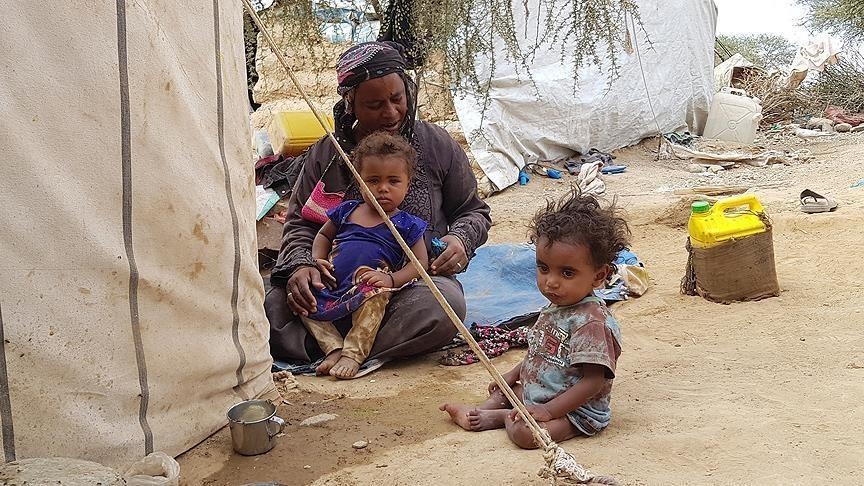South Sudanese surviving on tree leaves
Families says some children have diarrhea after eating leaves as world acknowledges World Hunger Day
 File Photo
File Photo
JUBA, South Sudan
With no food rations in sight, Ayen Madit, a 40-year- old mother of seven, survives on tree leaves and wild fruits as food insecurity worsens in the Northern Bhar El Ghazal region of South Sudan.
UN agencies recently warned that 7.24 million South Sudanese are on the brink of catastrophe as food insecurity worsens because of flooding, conflicts, and the coronavirus.
In addition, the World Food Programme in April cut food rations by 50%, affecting 700,000 displaced South Sudanese and refugees in the world’s youngest nation.
Madit, a resident of Araith Payam of Aweil North, said people are eating leaves off trees since they are left with no choice as hunger bites.
She said a group of women go to the forest in the morning from 8 a.m. - 3 p.m. in search of wild fruits and tree leaves to feed their families.
“We go in groups to look for tree leaves and wild fruits leaving our children to stay home without anything to eat in the morning. They eat only in the evening when we come back from the forest,” Madit told Anadolu Agency in a telephone interview.
Northern Bhar El Ghazal is one of the few areas that was spared from the more than the six-year conflict that broke out in December 2013.
“We sacrifice our lives for the children so that they can eat,” she said. “There is not enough food to eat. Some of the children have diarrhea after eating the leaves.”
Madit disclosed that due to the bitterness of Lalop tree leaves, they often go hungry.
She urged the government and humanitarian agencies to rescue residents from the situation by extending relief support.
“We are South Sudanese, we are really suffering and need our government to rescue us. We still have hope that our government might save us from this dire situation we are in,” said Madit.
Abuk Guot, 37, mother of five, also from Awiel North, said the situation is getting worse.
“We are really suffering. No food to eat. We just survive on wild fruits and tree leaves. If you didn’t go to the forest to look for tree leaves, your children will not eat.”
She vowed to keep her children alive and not allow them to die of hunger.
Deng Mabior, 30, from Panyagor in Jonglei state, said it is difficult for residents to get food because everything was destroyed by floods last year.
“Life is really hard but the good thing is that people, especially young men, are able to go fishing. That is the only way of sustaining life here. It is only difficult to old people who cannot move -- are the ones suffering now,” he said. “If you have a fishing net or hook, you can try your luck. If you get something you share with your family.”
He said people are suffering with no food to eat and the little provided by UN agencies is not enough to cover the entire population.
Minister of Humanitarian Affairs and Disaster Management Peter Mayen Majongdit acknowledged the suffering and said efforts are underway to provide food to those affected.
“We are prepositioning food now and will be distributed to all those affected by hunger across the country,” he said.
He acknowledged the looming hunger in many areas across the country caused by several factors including floods, pests, and the effects of COVID-19.
President Salva Kiir Mayardit visited flood-affected residents in Jonglei in early April and told them that peace has come and fighting hunger is now one of his priorities so that no South Sudanese dies of hunger again.
Aid agencies have said as many as 7.2 million South Sudan will need food assistance by mid-2021, a figure never reached even at the peak of the six-year crisis which killed 400,000 and displaced 4 million others.
Effects of that crisis, COVID-19, floods, drought, and a desert locust invasion in 2020 are blamed for the increase in food insecurity.
Anadolu Agency website contains only a portion of the news stories offered to subscribers in the AA News Broadcasting System (HAS), and in summarized form. Please contact us for subscription options.


